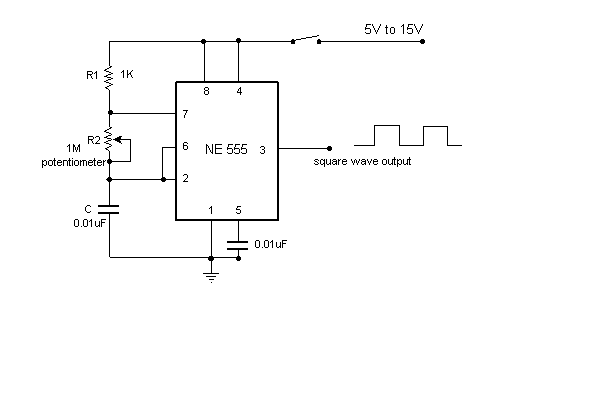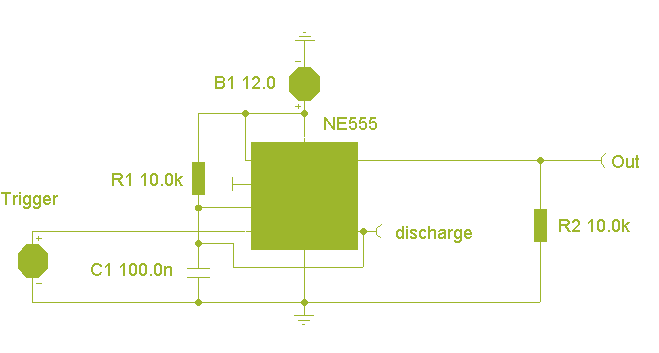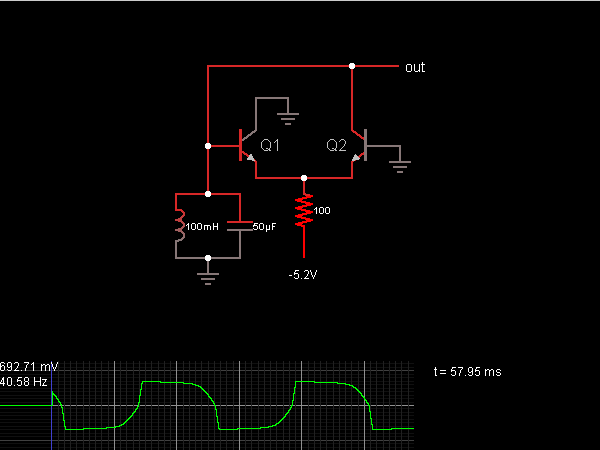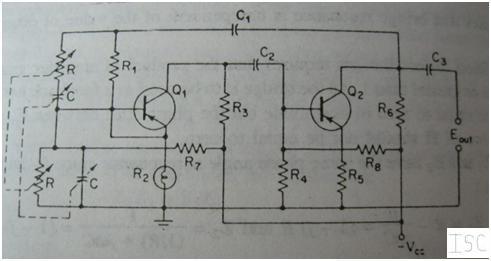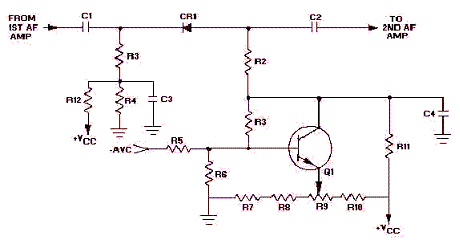
Basic RF Oscillator
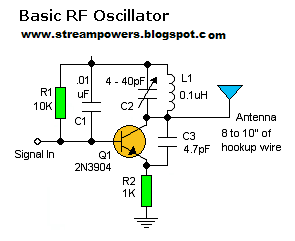
The signal can be received using a standard FM radio receiver. It should be coupled by a disc capacitor of approximately 0.1 µF to the main stage.
To implement a circuit capable of receiving the specified FM signal, a standard FM radio receiver can be utilized. The coupling of the signal to the main stage of the receiver is achieved through a disc capacitor, which is selected to have a capacitance value of approximately 0.1 µF.
In this configuration, the disc capacitor serves to block any DC component of the incoming signal while allowing the AC component, which carries the information, to pass through. This is crucial for maintaining the integrity of the FM signal during the reception process. The capacitor must be rated to handle the frequency range of the FM broadcast, typically from 88 MHz to 108 MHz, ensuring that it does not introduce excessive loss or distortion.
The main stage of the FM receiver typically includes an RF amplifier, a demodulator, and an audio amplifier. The RF amplifier boosts the weak incoming signal, improving the overall sensitivity of the receiver. The demodulator then extracts the audio information from the modulated carrier wave, converting it into an audio signal that can be amplified further by the audio amplifier for playback through speakers or headphones.
Proper grounding and shielding are essential in this circuit to minimize noise and interference, which can degrade the quality of the received signal. Additionally, the layout of the circuit should be designed to reduce parasitic capacitance and inductance, which can affect the performance of the FM receiver.
In summary, the use of a 0.1 µF disc capacitor for coupling the signal to the main stage of an FM radio receiver is a critical design consideration that ensures effective signal processing and high-quality audio output.You ought be able to pick up its signal with a standard FM radio receiver. The signal in ought be coupled by a disc capacitor of about 0. 1 uF to stage in main of it. 🔗 External reference
To implement a circuit capable of receiving the specified FM signal, a standard FM radio receiver can be utilized. The coupling of the signal to the main stage of the receiver is achieved through a disc capacitor, which is selected to have a capacitance value of approximately 0.1 µF.
In this configuration, the disc capacitor serves to block any DC component of the incoming signal while allowing the AC component, which carries the information, to pass through. This is crucial for maintaining the integrity of the FM signal during the reception process. The capacitor must be rated to handle the frequency range of the FM broadcast, typically from 88 MHz to 108 MHz, ensuring that it does not introduce excessive loss or distortion.
The main stage of the FM receiver typically includes an RF amplifier, a demodulator, and an audio amplifier. The RF amplifier boosts the weak incoming signal, improving the overall sensitivity of the receiver. The demodulator then extracts the audio information from the modulated carrier wave, converting it into an audio signal that can be amplified further by the audio amplifier for playback through speakers or headphones.
Proper grounding and shielding are essential in this circuit to minimize noise and interference, which can degrade the quality of the received signal. Additionally, the layout of the circuit should be designed to reduce parasitic capacitance and inductance, which can affect the performance of the FM receiver.
In summary, the use of a 0.1 µF disc capacitor for coupling the signal to the main stage of an FM radio receiver is a critical design consideration that ensures effective signal processing and high-quality audio output.You ought be able to pick up its signal with a standard FM radio receiver. The signal in ought be coupled by a disc capacitor of about 0. 1 uF to stage in main of it. 🔗 External reference
